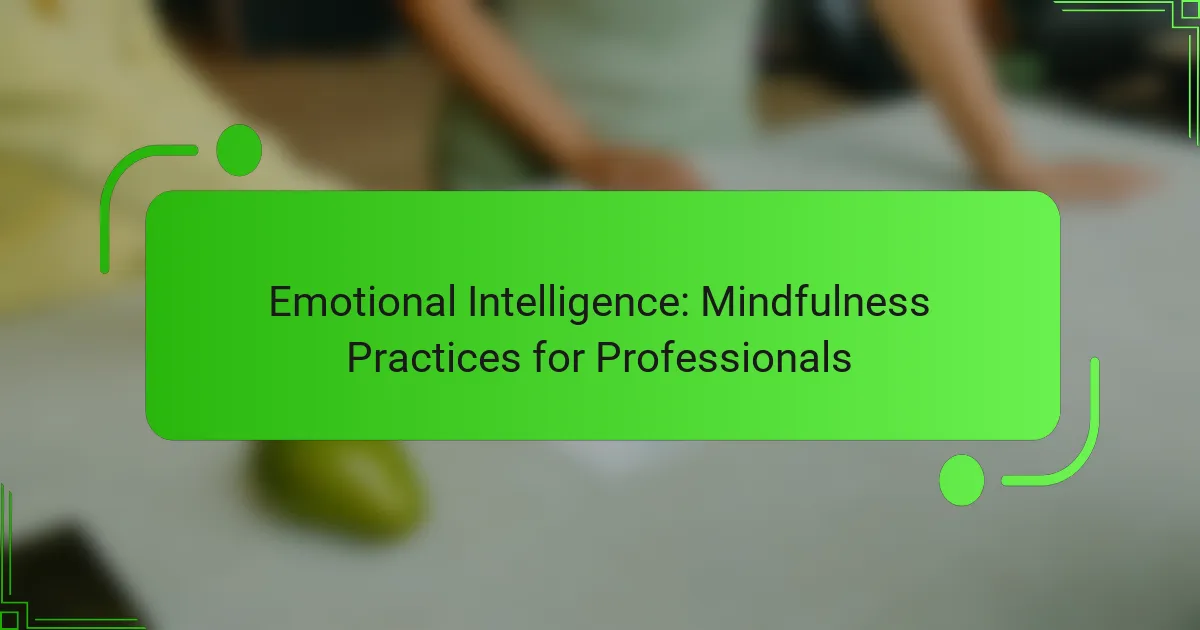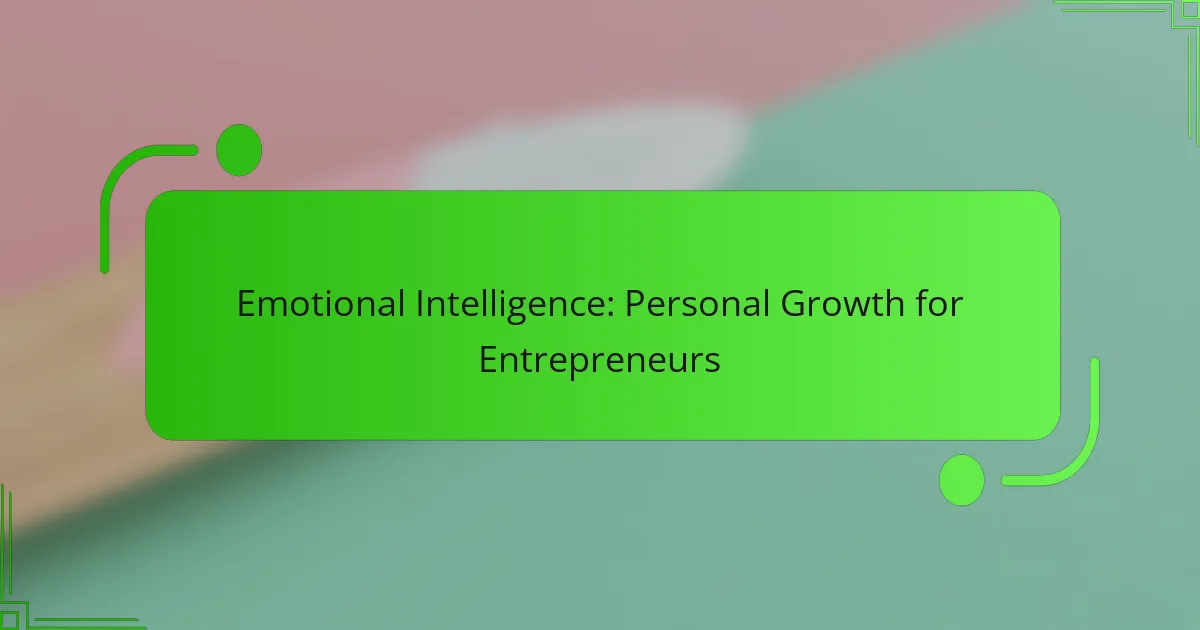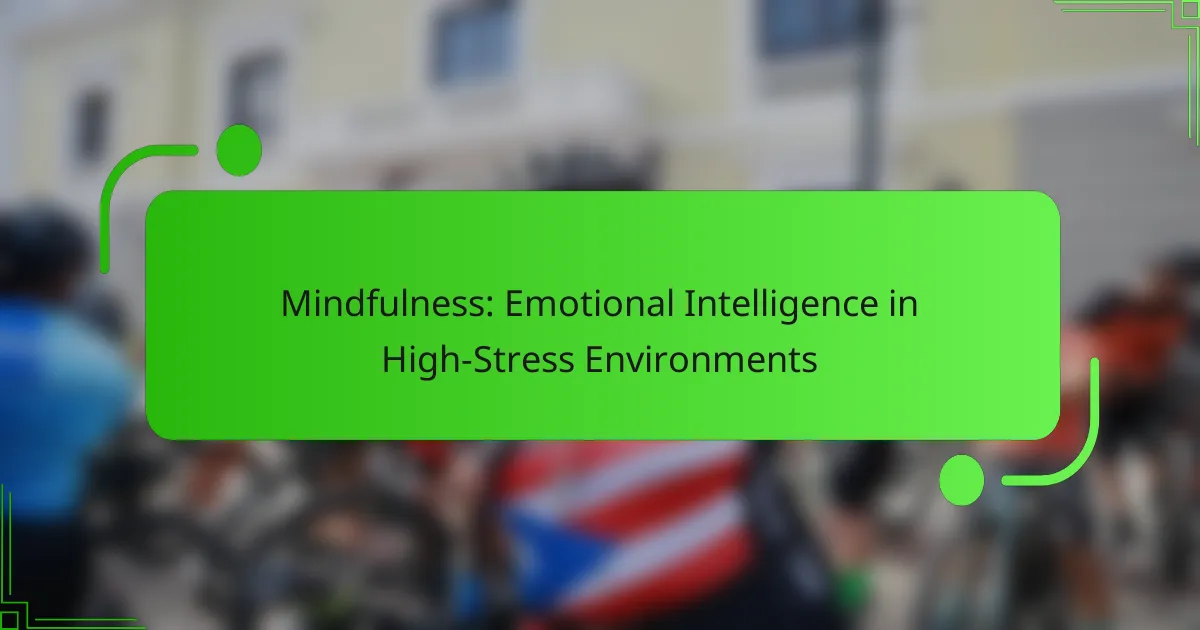Mindfulness practices are essential tools for professionals seeking to enhance their emotional intelligence. By fostering self-awareness and empathy, these techniques help individuals manage stress and improve their interactions with others. Integrating mindfulness into daily routines can lead to better focus, emotional regulation, and overall productivity in the workplace.

How can mindfulness practices enhance emotional intelligence in professionals?
Mindfulness practices can significantly enhance emotional intelligence in professionals by promoting greater self-awareness, empathy, and stress management. These practices encourage individuals to be present and attuned to their emotions and the emotions of others, leading to improved interpersonal interactions and decision-making.
Improved self-awareness
Mindfulness fosters improved self-awareness by encouraging individuals to observe their thoughts and feelings without judgment. This heightened awareness allows professionals to recognize their emotional triggers and responses, leading to more thoughtful reactions in challenging situations.
Practicing mindfulness techniques, such as meditation or deep-breathing exercises, can help professionals develop a clearer understanding of their strengths and weaknesses. Regular reflection on personal experiences can further enhance this self-awareness, enabling better personal and professional growth.
Enhanced empathy
Mindfulness enhances empathy by training individuals to listen actively and respond with compassion. When professionals practice being present, they become more attuned to the emotions of their colleagues and clients, facilitating deeper connections and understanding.
Engaging in mindfulness exercises that focus on perspective-taking can help professionals cultivate empathy. For example, visualizing oneself in another’s situation can lead to more supportive and effective interactions in the workplace.
Better stress management
Mindfulness practices are effective for better stress management by promoting relaxation and reducing anxiety. Techniques such as mindfulness meditation can lower cortisol levels, helping professionals cope with workplace pressures more effectively.
Incorporating short mindfulness breaks throughout the workday can provide immediate relief from stress. Simple practices, such as taking a few deep breaths or stepping away for a brief walk, can help professionals reset and regain focus.
Increased resilience
Mindfulness contributes to increased resilience by helping professionals develop a positive mindset and adaptability in the face of challenges. By fostering a non-reactive approach to difficulties, individuals can navigate setbacks with greater ease.
Practicing gratitude through mindfulness can also enhance resilience. Regularly reflecting on positive aspects of work and life can shift focus from stressors to strengths, promoting a more resilient attitude.
Improved communication skills
Mindfulness improves communication skills by encouraging clarity and intention in conversations. Professionals who practice mindfulness are more likely to express their thoughts and feelings clearly, reducing misunderstandings and conflicts.
Active listening, a key component of mindfulness, allows professionals to engage more fully with others. This practice not only enhances interpersonal relationships but also fosters a collaborative work environment where ideas can be shared openly and effectively.
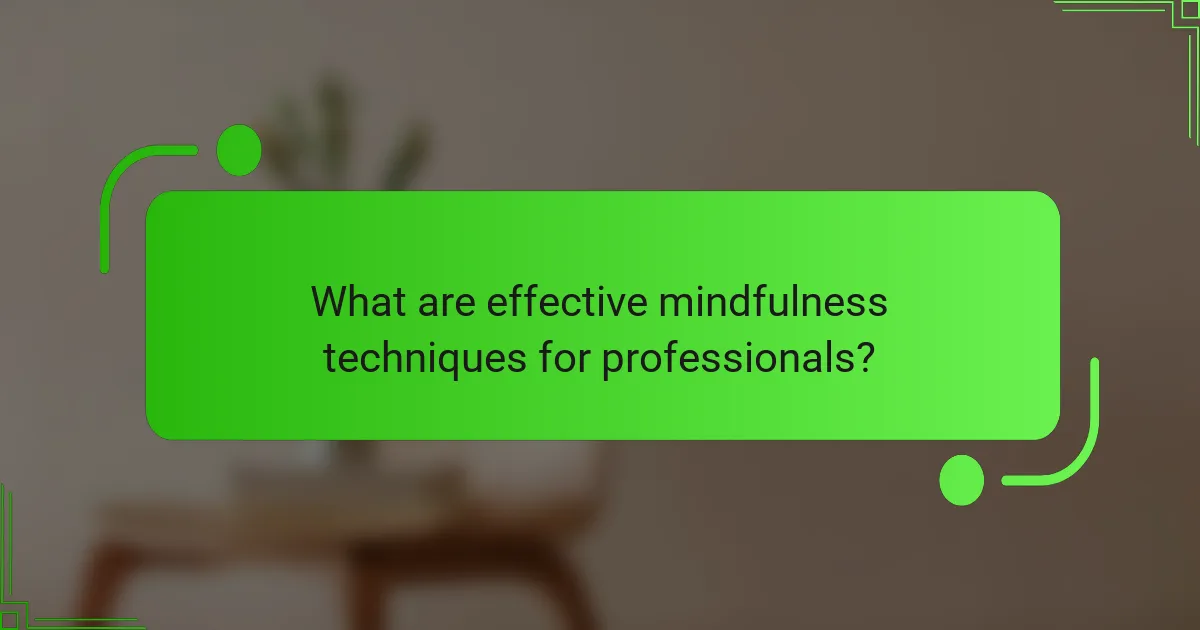
What are effective mindfulness techniques for professionals?
Effective mindfulness techniques for professionals include practices that enhance focus, reduce stress, and improve emotional regulation. These techniques can be easily integrated into a busy workday, promoting overall well-being and productivity.
Mindful breathing exercises
Mindful breathing exercises involve focusing on your breath to cultivate awareness and calmness. A simple technique is the 4-7-8 method: inhale for 4 seconds, hold for 7 seconds, and exhale for 8 seconds. Practicing this for a few minutes can help reduce anxiety and improve concentration.
To incorporate this into your routine, take short breaks during the day to practice mindful breathing. Aim for 5-10 minutes, especially during stressful moments, to regain composure and clarity.
Body scan meditation
Body scan meditation is a practice that encourages awareness of physical sensations throughout the body. Start by lying down comfortably and focusing on each part of your body, beginning from the toes and moving up to the head. This technique helps identify areas of tension and promotes relaxation.
Set aside 10-20 minutes for this meditation, ideally in a quiet space. Regular practice can enhance your ability to manage stress and improve your emotional responses in challenging situations.
Mindful walking
Mindful walking is a practice that combines movement with awareness, allowing you to connect with your surroundings. Focus on the sensations of your feet touching the ground and the rhythm of your breath as you walk slowly. This can be done during a break or while commuting.
Try to walk for 10-15 minutes, paying attention to your environment and your body’s movements. This practice can help clear your mind and boost creativity, making it an excellent choice for professionals needing a mental reset.
Journaling for reflection
Journaling for reflection involves writing down thoughts and feelings to gain insights into your emotional state. Spend a few minutes each day or week to write about your experiences, challenges, and successes. This practice can enhance self-awareness and emotional intelligence.
Consider using prompts such as “What am I grateful for today?” or “What challenges did I face, and how did I respond?” Aim for 5-10 minutes of journaling to foster a deeper understanding of your emotions and reactions.
Guided imagery
Guided imagery is a technique that uses visualization to promote relaxation and reduce stress. By imagining a peaceful scene or a positive outcome, you can shift your mindset and enhance emotional resilience. This practice can be particularly helpful before high-pressure situations.
To practice guided imagery, find a quiet space, close your eyes, and visualize a calming environment, such as a beach or forest. Spend 10-15 minutes immersing yourself in this imagery, focusing on the sights, sounds, and feelings associated with it. This can help improve focus and emotional balance in your professional life.
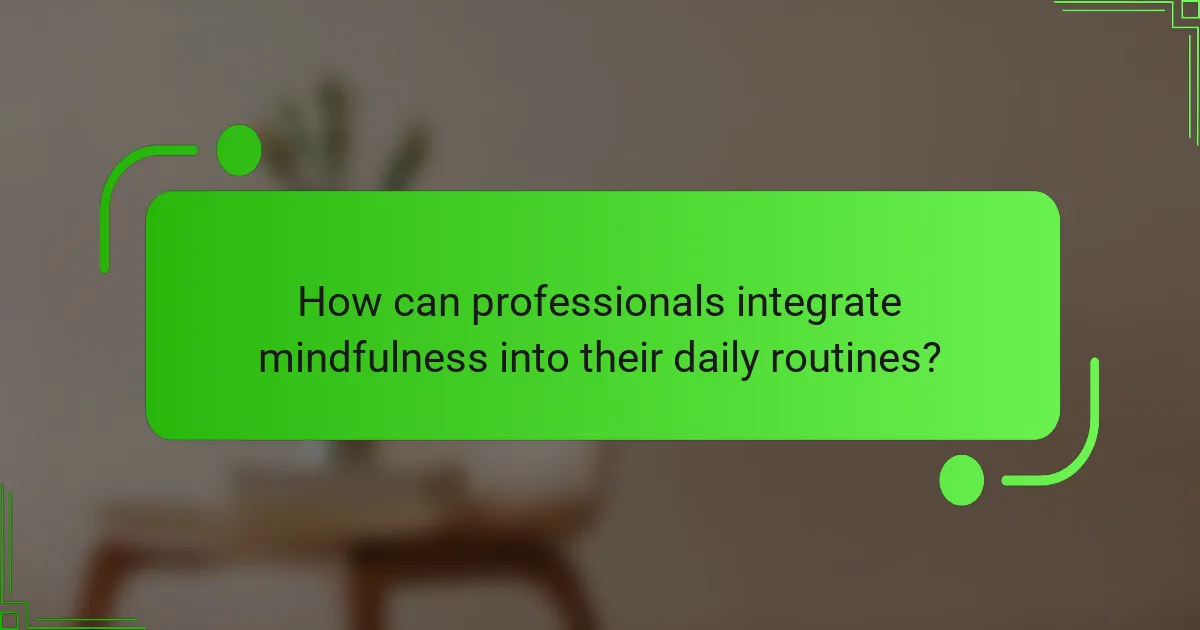
How can professionals integrate mindfulness into their daily routines?
Professionals can integrate mindfulness into their daily routines by incorporating specific practices that promote awareness and presence throughout the day. Simple rituals and intentional pauses can enhance focus, reduce stress, and improve overall emotional intelligence.
Morning mindfulness rituals
Starting the day with mindfulness can set a positive tone for the hours ahead. Consider dedicating 5-10 minutes each morning to practices such as meditation, deep breathing, or gentle yoga. These activities help clear the mind and prepare for the challenges of the day.
Another effective morning ritual is journaling. Spend a few minutes writing down thoughts, intentions, or gratitude, which can foster a sense of purpose and clarity. Aim for consistency by incorporating these rituals into your morning routine.
Mindful breaks during work
Taking mindful breaks throughout the workday is essential for maintaining focus and reducing stress. Schedule short breaks every hour, lasting about 5 minutes, to step away from your desk and engage in mindful breathing or stretching. This can help recharge your mental energy.
During these breaks, practice being fully present. Avoid distractions such as phones or emails, and instead focus on your surroundings or your breath. This practice can enhance productivity and emotional resilience.
End-of-day reflection practices
Concluding the workday with reflection can help professionals process their experiences and emotions. Spend 5-10 minutes reviewing the day’s events, identifying what went well and what could be improved. This practice fosters self-awareness and emotional growth.
Consider creating a simple checklist for reflection, including questions like: What did I learn today? How did I feel during different tasks? What can I do differently tomorrow? This structured approach can enhance mindfulness and prepare you for the next day.
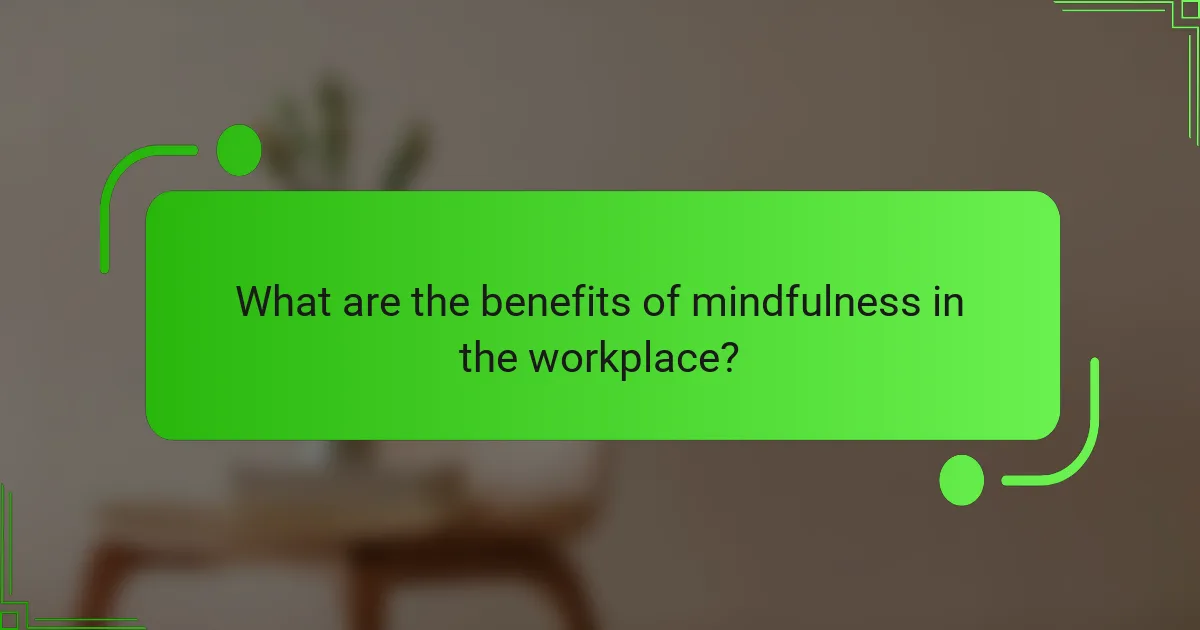
What are the benefits of mindfulness in the workplace?
Mindfulness in the workplace enhances emotional intelligence, leading to numerous benefits including improved focus, better stress management, and stronger interpersonal relationships. By integrating mindfulness practices, professionals can create a more productive and harmonious work environment.
Increased productivity
Mindfulness practices help employees concentrate better, reducing distractions and enhancing overall efficiency. Techniques such as focused breathing or short meditation sessions can lead to significant improvements in task completion times and quality of work.
For example, professionals who take brief mindfulness breaks during their workday often report a clearer mind and a greater ability to tackle complex problems. Implementing a routine of 5-10 minutes of mindfulness can yield noticeable boosts in productivity.
Reduced employee burnout
Mindfulness can play a crucial role in mitigating employee burnout by promoting stress reduction and emotional resilience. Regular mindfulness practices help individuals manage their stress levels, leading to a more balanced work-life integration.
Organizations that encourage mindfulness initiatives, such as workshops or guided sessions, often see a decline in absenteeism and turnover rates. Employees equipped with mindfulness skills are better able to cope with workplace pressures, fostering a healthier work environment.
Improved team dynamics
Mindfulness fosters better communication and collaboration among team members, enhancing overall team dynamics. When individuals practice mindfulness, they become more attuned to their own emotions and those of their colleagues, leading to more empathetic interactions.
Teams that engage in mindfulness exercises together can build trust and understanding, which are essential for effective collaboration. Simple practices, such as group meditations or mindful listening exercises, can strengthen team cohesion and improve collective problem-solving abilities.
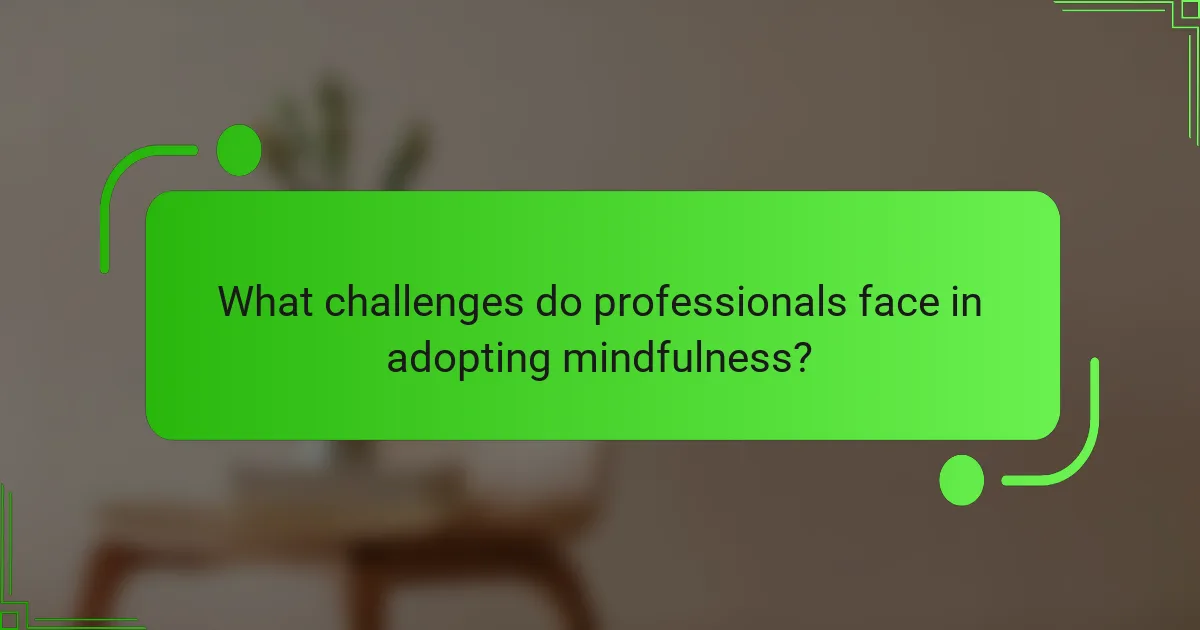
What challenges do professionals face in adopting mindfulness?
Professionals often struggle with integrating mindfulness into their busy routines due to various challenges. Key obstacles include time constraints, workplace culture, and a lack of awareness about the benefits of mindfulness practices.
Time constraints
Time constraints are a significant barrier for professionals looking to adopt mindfulness. Many individuals feel they do not have enough time in their day to dedicate to mindfulness practices, often prioritizing work tasks over personal well-being.
To effectively incorporate mindfulness, professionals can start with short, manageable sessions. Even dedicating just 5-10 minutes a day can lead to noticeable improvements in focus and stress reduction. Techniques such as mindful breathing or brief meditation can be easily integrated into breaks or commuting time.
Setting specific times for mindfulness, such as during lunch breaks or at the start of the day, can help create a routine. Additionally, using reminders or mindfulness apps can assist in maintaining consistency without overwhelming one’s schedule.
